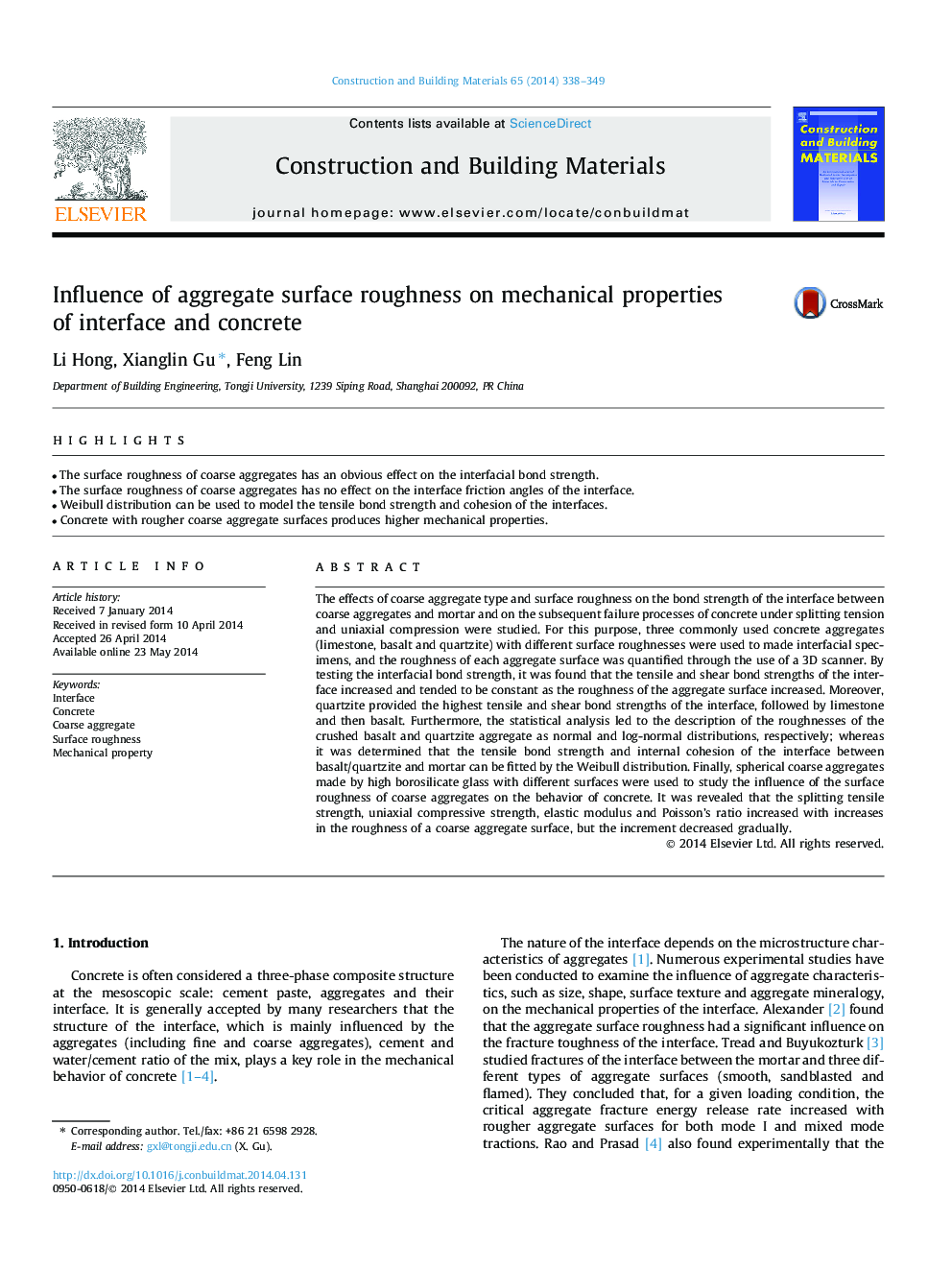| کد مقاله | کد نشریه | سال انتشار | مقاله انگلیسی | نسخه تمام متن |
|---|---|---|---|---|
| 257503 | 503591 | 2014 | 12 صفحه PDF | دانلود رایگان |
• The surface roughness of coarse aggregates has an obvious effect on the interfacial bond strength.
• The surface roughness of coarse aggregates has no effect on the interface friction angles of the interface.
• Weibull distribution can be used to model the tensile bond strength and cohesion of the interfaces.
• Concrete with rougher coarse aggregate surfaces produces higher mechanical properties.
The effects of coarse aggregate type and surface roughness on the bond strength of the interface between coarse aggregates and mortar and on the subsequent failure processes of concrete under splitting tension and uniaxial compression were studied. For this purpose, three commonly used concrete aggregates (limestone, basalt and quartzite) with different surface roughnesses were used to made interfacial specimens, and the roughness of each aggregate surface was quantified through the use of a 3D scanner. By testing the interfacial bond strength, it was found that the tensile and shear bond strengths of the interface increased and tended to be constant as the roughness of the aggregate surface increased. Moreover, quartzite provided the highest tensile and shear bond strengths of the interface, followed by limestone and then basalt. Furthermore, the statistical analysis led to the description of the roughnesses of the crushed basalt and quartzite aggregate as normal and log-normal distributions, respectively; whereas it was determined that the tensile bond strength and internal cohesion of the interface between basalt/quartzite and mortar can be fitted by the Weibull distribution. Finally, spherical coarse aggregates made by high borosilicate glass with different surfaces were used to study the influence of the surface roughness of coarse aggregates on the behavior of concrete. It was revealed that the splitting tensile strength, uniaxial compressive strength, elastic modulus and Poisson’s ratio increased with increases in the roughness of a coarse aggregate surface, but the increment decreased gradually.
Journal: Construction and Building Materials - Volume 65, 29 August 2014, Pages 338–349
